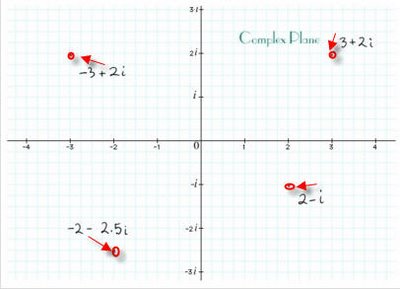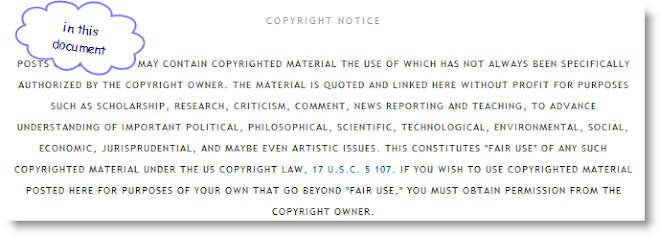Sunday, July 30, 2006
Saturday, July 29, 2006
The BEST Wiki Hosting Services by the No.1 Wiki Host: Free installation of Wiki tools: Mediawiki, TikiWiki.
One possibility...not sure 24,000MB is enough, at quick glance it is the largest I see. Maybe they have a premium package, but didn't see it. Off to hockey now.
Friday, July 28, 2006
Thursday, July 27, 2006
060727 11:12pm
 The banner at the top of this page includes an interesting image, which was obtained by zooming in on a tiny portion on the border of the Mandelbrot set, which is pictured in full at left. If you do a Google Image search for Mandelbrot Set, you'll get a sense of the amazing variety of images generated by the same simple mathematical formula.
The banner at the top of this page includes an interesting image, which was obtained by zooming in on a tiny portion on the border of the Mandelbrot set, which is pictured in full at left. If you do a Google Image search for Mandelbrot Set, you'll get a sense of the amazing variety of images generated by the same simple mathematical formula.The Wikipedia entry for Mandelbrot Set might appear intimidating, but the basic concept here is simple.
All these beautiful images emerge when you iterate a simple formula and graph the results.
What does that mean?
Imagine you have a simple formula such as
A*A+B (where B is a constant)
If you assume B=2 and pick an arbitrary value for A, e.g. A=7, the equation would look like this:
A*A+B = 7*7+2 = 49+2 = 51
Iterating the equation means calculating it again using the result, 51, as A in the next go-round.
So this time, A=51 and B=2
A*A+B = 51*51+2 = 2603
Iterating it again would look like this: A*A+B = 2603*2603+2 = 6,775,611 and so on...
The Mandelbrot set is the result of a very similar mathematical recipe, involving complex numbers. You don't need to go review complex analysis to get the point that iterating a simple formula and graphing the results yields all these fantastic images.
Many patterns in nature also can be accurately reproduced by iterating simple formulas. This broccoli, for example:

The recipe to produce the Mandelbrot set is slightly more complicated than the simple iteration example given above, but the basic concept of mapping a point on a graph is the same.
When complex numbers are involved, the results are graphed on the complex plane. The complex plane is analogous to the (good old) x,y plane. Complex numbers are made of two parts, a real part and an imaginary part. To represent complex numbers graphically, you need to keep track of the two parts separately. So each requires its own axis, which is easily represented as an ordinary looking two-dimensional graph, but with multiples of i plotted along the vertical axis instead of multiples of y.
So i is the imaginary unit, one step up the vertical axis on the complex plane (just as 1, the unit, is one step to the right on the horizontal (real) axis. The negative unit, -1, is one step to the left on the real axis. Rounding out the picture, we write -i one vertical step down. (See below.)
Complex numbers are written in the form
[real component] + [imaginary component]where the imaginary component is expressed as a multiple of i. For example
3 + 2iWhen you graph that, you count 3 units to the right (+3 on the real axis), and 2 units up (+2i on the imaginary axis), and plot your point. Here is a plot showing 4 different complex numbers as points on the complex plane:

The Mandelbrot set is a collection of points on the complex plane generated by a very simple algorithm (that's Math for "recipe") iterated a whole bunch of times.
The Mandelbrot set Recipe
Pick some point Z on the complex plane as your starting point. You will also need an arbitrary complex number constant, let's call it C. Following the iterative procedure described just below, we need to decide whether to color point Z black. The Mandelbrot Set is the collection of black points on the complex plane determined in this fashion.
Take another look at the collection of black points below:

Here's what you do with your starting point Z to decide whether or not to represent it with a black dot on the complex plane:
Multiply Z by itself. Add C. The answer is the new value for Z. Repeat, starting with the new Z (using the same value of C in every iteration).
Graph the result of each iteration. This generates what is called the Julia set of the point you started with. If the Julia set remains bounded, then the original point Z is colored black.
How do you know if the Julia set will remain bounded? Well, you keep iterating the function Z*Z+C until you get a value of Z that is more than 2 units away from the center. Once that happens, subsequent iterations will yield values of Z that very quickly head off towards infinity. If the values of Z head off towards infinity, then the Julia set is not bounded, which means that the point you started with is not in the Mandelbrot set, and does not get colored black.
It can take a very large number of iterations before you can be sure that a Julia set is not bounded. For practical reasons (limited computing power and time) you have to pick some cutoff point, say 5000 iterations. If you still don't know after 5000 iterations, you give up and assume that the initial point is in the Mandelbrot set, or at least very close to it, and color it black.
So that's how to determine if a point is black or not. But where do all the other colors come from?
All the points that are not black are not on the Mandelbrot set. So, we could color all non-Mandelbrot set points white. But more interesting is to color-code the non-black points according to how many iterations it took before you were sure that the Julia set was not going to remain bounded.
For example, if it took between 0 and 1000 iterations, color it red. If it was between 1001 and 2000, orange; 2001 - 3000, yellow, etc. The color choices are arbitrary, but they have meaning: they help illuminate the chaotic detail on the border of the Mandelbrot set. (The choice of black for the points on the Mandelbrot set is also arbitrary, by the way.)
[pictures / video here]
Want to explore? There are several online applets, such as this one that allow you to zoom in on the Mandelbrot set. More powerful programs are available for free or very cheap, such as Fractal eXtreme, which yield much higher resolution images.
Oh, yeah: I can't write a whole post about the Mandelbrot set without mentioning fractal geometry. The Mandelbrot set is the mother of all fractals. A fractal, roughly speaking, is a shape that is recursively constructed or self-similar, that is, a shape that appears similar at different scales of magnification. You can see self-similarity in the broccoli pictured above; each bump, magnified, looks a lot like the whole broccoli.
Wednesday, July 26, 2006
Tuesday, July 25, 2006
Monday, July 24, 2006
Nothing Sacred
Howard Rheingold said this about the book:
I read Nothing Sacred reluctantly, from a stance of deep skepticism, and learned to my delight and enlightenment, that this is truly a Jewish approach. Rushkoff uses millennia of Jewish teachings to reveal that God is indeed to be questioned not obeyed, created not worshipped, continually revised, reconsidered, and debated - not graven in stone. I truly believe this book might end up as one of the most important works of Jewish literature, worthy of comparison with Maimonides and Buber. Many will be outraged and even furious at Rushkoff for daring to revise the Jewish tradition of self-questioning. I thank him for helping me feel like a Jew again.
Sunday, July 23, 2006
Saturday, July 22, 2006
Friday, July 21, 2006
Thursday, July 20, 2006
Tuesday, July 18, 2006
Sunday, July 16, 2006
Saturday, July 15, 2006
the game of life
Friday, July 14, 2006
Thursday, July 13, 2006
panic simulations
check out the 1000 people panic simulation where, as an aside, you can see what appears to be a phase transition
"the kid's to do" maintenance report
Secondly, the k-to-do blog kept stalling for some active-X control to run. This turned out to relate to a test streaming video post pointing to your front yard webcam video on uthboy. So I simply saved that post down as a draft, which fixed the problem.
Ass Burger Island
Novel: little kid, asberger boy, somewhere in the hypervolume that is autism, fights his way out of the conventional tar pit in which he was crudely placed by conventional society.
He may even be "diagnosed" with this "syndrome" early on, labeled as what sounds to him like "ass burger," It makes no sense to him that this label should be relevant to anybody let alone to him, which vastly complicates the problem, serving as a moat between the isolated ass burger tar pit and the conventional world. A baseline understanding scrambler that does in most of the people on ass burger island.
By the turn of the century, with the growth of the network information economy, individuals are increasingly free "to do more for and by themselves," ... "do more in loose commonality with others, without being constrained to organize their relationships through a price system or in traditional hierarchical models of social and economic organization," and "to do more in formal organizations that operate outside the market sphere." [Benkler, WN @ 8].
So, asberger people -- a great many of whom are the ones that really have something going on, of course, Einstein for example -- finally link up and turn convention inside out. "Asberger Syndrome," this purported subset of "Autism" is an n-dimensional blob, not a neat clinical distinction. In other words, it is no tar pit leper colony on an isolated island.
No, no.
Now who has the order, and who the disorder?
Rather than focus on what Asberger's syndrome is, or what to call the disease suffered by conventional individuals whose worldview permits such clumsy distinctions, it would be better to ask this question [paraphrasing Benkler, WN @ 8]:
How long can conventional limits imposed by the economics of industrial production persist with the rise of the networked information economy? -- limits that constrain our ability to pursue new and better mixes of economic tradeoffs, to make new and more productive arrangements that enable the conception and implementation of commitments to freedom and justice.
To be sure there are also sociopaths of various stripes on the conventional Ass Burger Island, but how surprising is it that many asperger people throughout the ages couldn't ultimately cope with tar-pit life on an isolated island?
Now the boggle trays have turned. Enhanced individual autonomy requires "a fairly substantive and rich conception of autonomy as a practical lived experience, rather than the formal conception preferred by many who think of autonomy as a philosophical concept." [Benkler, WN @ 9].
Individuals now have "a significantly greater role in authoring their own lives, by enabling them to perceive a broader range of possibilities, and by providing them a richer baseline against which to measure the choices they in fact make." [Benkler, WN @ 9]
So asberger people can more and more easily find their way off of Ass Burger Island, and the delusion of the island is simply transcended. Just as a three-dimensional safe will not exclude a four-dimensional thief, doofus-dimensional moats cannot long circumscribe their mythical islands, not any more.
Wednesday, July 12, 2006
Asperger syndrome - Wikipedia, the free encyclopedia

we get a third domain name for free as part of our upgraded ipowerweb subscription
what do you think of www.ruthsboys.com?
Tuesday, July 11, 2006
chichaco
Are you a "Sourdough" (not the bread) or a "Chichaco"? Take the quiz and find out.
(Chichaco comes from the native mispronounciation of Chicago.)
***
http://www.alaskarentals.com/ferry-article1.htm:
Nick Popely, Director of Marketing for the Ketchikan Visitors Bureau, just moved here in September of 2001. He's a retired automotive advertising executive from Rochester, New York. He has been here several times to visit his daughter and when the job opportunity opened for the KVB position, he accepted it. He has never been to Prince of Wales, so he feels he has a lot to learn about the Inside Passage area and he can't wait for the chance to see the Island and fish its uncrowded waters.
Everyone warned Nick about the weather here, but he concludes that as a fisherman he can adapt, but adds, "When the sun comes out, we are reborn. I am amazed that people here wear short sleeves and sandals all year long. Kids don't even pay any attention to the rain." Residents of Southeast Alaska know that if you see someone with an umbrella, they must be a tourist. "It's just a way of life for all you 'Sourdoughs'. I'm still a 'Chichaco', " Nick adds. "Sourdough" is term used to describe the people who came to Alaska to pan for gold. Their unsuccessful adventure turned "sour" and they didn't have the "dough" to return home so they remained and made the best of it. Chichaco, which some say was a native pronunciation of Chicago, are people who have resided in the 49th state less than one year or have not made it through one winter.
Monday, July 10, 2006
audioblogger faq
I'm 99% certain you already read this page, but this is a cool page. It actually answers all your questions. It is spoken in Truthboy and I think it tells you a lot about Google.
Comparison of wiki software - Wikipedia, the free encyclopedia
(but note in above:
↑ “Ease of installation” is expressed relative to other server software packages, and not to desktop applications. [17] )
http://en.wikipedia.org/wiki/MediaWiki (the wikipedia engine)
you need mysql relational database (which is also free)
[http://meta.wikimedia.org/wiki/MediaWiki_User%27s_Guide:_Installation :MediaWiki can be difficult to install for the average computer user with little experience with server-based software. Most users who wish to use wiki software may benefit more from using a free wiki host (see a list of wiki hosts on Wikibooks). This page guides you through the process of installation.]
free wiki (another place to compare; i think w/screenshots)
Sunday, July 09, 2006
Saturday, July 08, 2006
and the network hums a little tune to itself
linking to his friend Peter's blog:
A World of Trouble, Loads of Fun: "The big ideas -- at the nexus of mathematics, biology, and technology, with some politics, music, and whatever else we like in the mix. We'll tell the truth, analyze, and learn."
Star Trek (Fan made productions) - Wikipedia, the free encyclopedia
Star Trek (Fan made productions) - Wikipedia, the free encyclopedia: "This article deals with fan-made productions using elements of the Star Trek franchise. Paramount Pictures and its licensees are the only organizations legally allowed to create any commercial products with the name and trademark Star Trek. Consequently, these fan productions are unauthorized and subject to legal issues. Even so, this massive body of work exists and continues to grow. Fans have produced works in the performing arts (fan films, the stage, audio drama or filk), literature (fan fiction and screenplays), the visual arts (2D & 3D) and the recreational arts (games, models & crafts)."
Featured on ABC News Story linked from Yahoo! And why they make it so hard for me to link directly to that content here, I think I know. Here's my best shot:
sorry if this crashes your computer (just kidding: it'll probably just be a broken link. no, actually, i tried it just now and it worked. it pops up another whole window and plays the correct abc stream in fine top-down old media fashion. with forced viewing trailers (ok, gotta pay bills; whatever)). i call your attention to this content solely for academic and scientific reasons. vgamkianibbtsfrgdl.













































